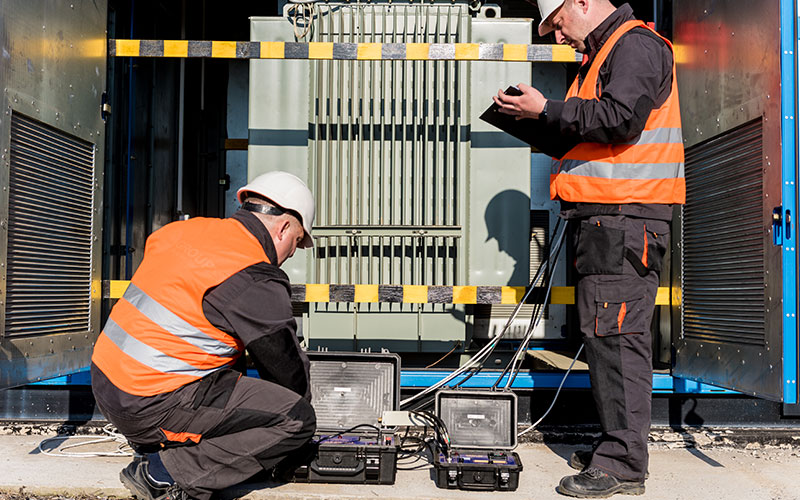Transformer classification, working principle, advantages and disadvantages, main uses
A transformer is an important device for transporting electrical energy and can change the size of the voltage without changing the frequency. Transformers can convert high voltage to low voltage, and can also convert low voltage to high voltage, which is transmitted to a distance.
First, classification of transformers
1. Classification by rated capacity:
(1)Household transformers: transformers with rated capacity below 1000KVA are household transformers.
(2) Integrated transformer: its rated capacity is 200KVa-1000kVA, mostly used in substations and distribution stations, and its voltage level is between 6KV-35KV.
(3) Special transformers: generally used in production and scientific research institutions, its rated capacity is about 200KVa-50KVA, the voltage level is low, generally 1KV or 500V below.
(4) Ultra-large capacity transformers: their quantitative load is greater than 1000KVA, they are generally used in power plants or railway stations, its voltage can be greater than 35KV, or even up to 1050KV.
2. Classification by manufacturing process and structural characteristics:
(1)Chip transformer: its wire is arranged in a disk shape, the transformer winding is light and easy to install, but its production is complex and expensive, and it is suitable for high frequency and high power requirements, especially for precision equipment such as computers.
(2) Bending transformer: because the winding connection is simple, it can effectively improve the safety of the equipment, and it occupies a small area and has a wide range of use, but when the transformer load is large, it is often used for large and medium-sized machines and lamps because of the heat generated by thermal energy and the production is troublesome.
(3)Ring transformer: it has a compact structure, small size, light weight, can effectively improve the stability of operation, so it is often used in the forward, radio, measurement and other applications.
3. Classification by transmission direction:
(1)Double feed transformer: that is, double transformer, low and high voltage windings have two groups respectively, the output voltage is the sum of the load capacity of the two groups, and is imported into the corresponding load device.
(2) Single-feed transformer: a typical example is the bridge transformer, it is a very important transformer, which is characterized by a group of low and high voltage windings, when the output voltage increases, the ratio of high voltage windings will increase, when the output voltage is reduced, the ratio of high voltage windings will decrease.
Second, the working principle of the transformer
The working principle of the transformer is the use of the principle of electromagnetic induction, when a winding for AC electromagnetic excitation, the second winding will also be subjected to the same electromagnetic excitation, so that between them for signal transmission, this is the principle of electromagnetic induction. In the circuit of the transformer, its two windings are usually called the high voltage end and the low voltage end, which are respectively connected to the input voltage power supply and the load device, and there is a main winding and a number of auxiliary winding at the high voltage end.
Whether electromagnetic induction can occur effectively in the transformer depends on whether the high and low voltage windings are co-magnetic. If there is common magnetic field between the windings, the transformer can work effectively, and the output voltage and power can be adjusted normally; If the two windings cannot be co-magnetised, the transformer cannot work effectively, and the output voltage and power cannot be controlled.
Three, the advantages and disadvantages of transformers
Advantages of transformer:
1, safe and reliable: the voltage conversion ratio is accurate, the residual consumption is particularly low, good stability, the current influence is small, the interference to the grid is low, and the reliability is high.
2, strong applicability: it has multiple functions, high reliability, and can run uninterrupted for a long time under various harsh conditions.
3, small size: its size is small, much smaller than the traditional transformer, compact structure, easy to transport, handling and installation.
Disadvantages of transformer:
1, high price: due to its special function, complex structure, high external protection requirements, so the price is high.
2, not long life: due to its complex structure, function realization technology and assembly process complex, its service life is relatively short.
3, the operation noise is larger: some gears in the transformer running noise is larger, will affect the power equipment operating environment.
Main uses of transformer:
1, transformers are often used in power systems to transform the power supply of different voltage levels, making the power from generators to home and industrial machinery and equipment more safe and reliable.
2, the transformer can be used to change the proportion of current and voltage changes, greatly improving the reliability and safety of the equipment.
3, the transformer is used to detect the voltage level and current strength in the power system to protect the normal operation of the power work.


